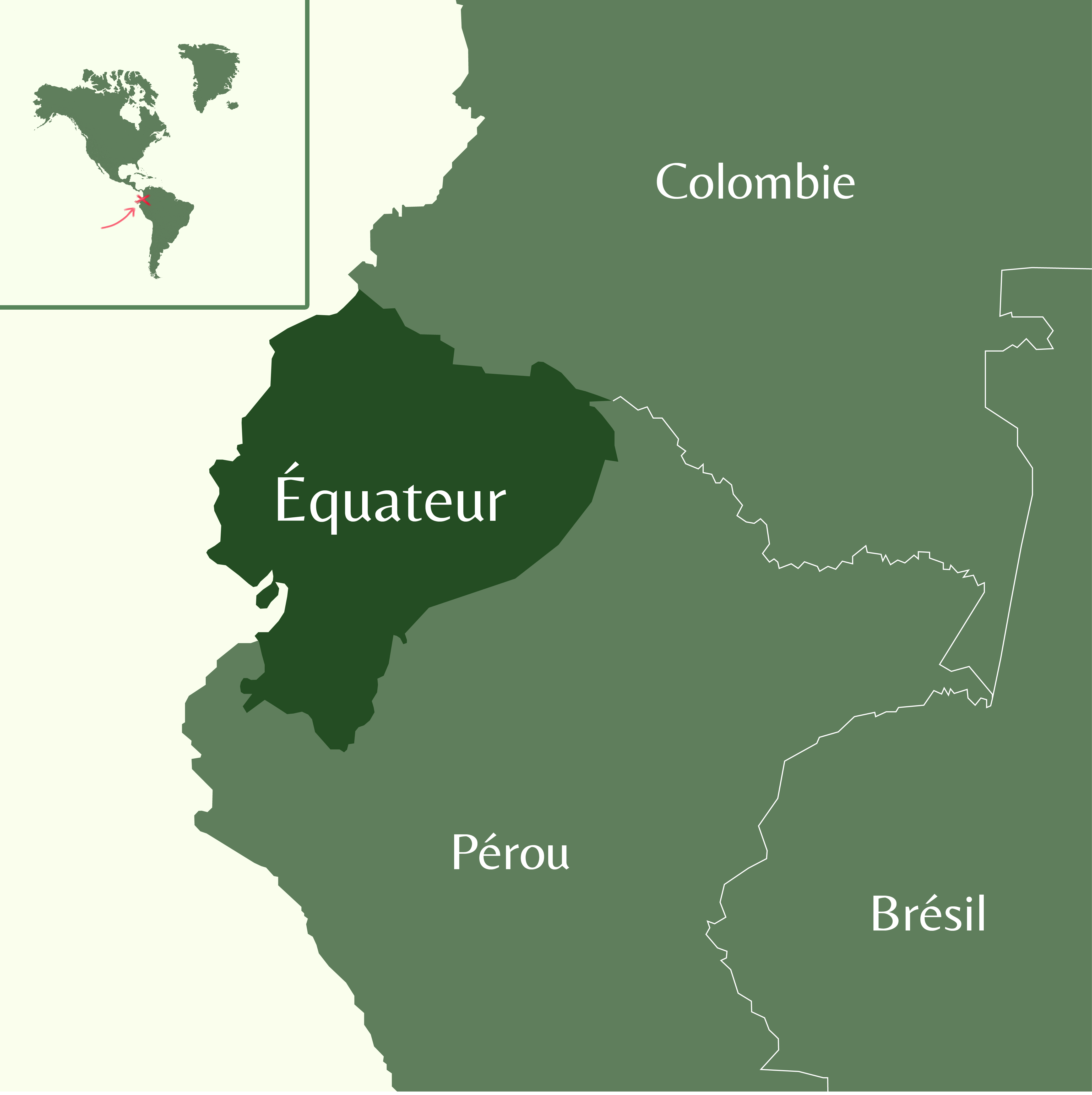The Amazon, a sanctuary of biodiversity under threat
Ecuador benefits from an exceptional natural heritage and ranks among the 10 countries with the richest biodiversity in the world. This is particularly due to the Napo region, covered by the Amazon rainforest, which is teeming with unique and highly diverse fauna and flora. It serves as a sanctuary for highly endangered species such as the Amazonian manatee and the brown-headed spider monkey.
Unfortunately, a boom in the establishment of extremely polluting mining concessions is damaging its natural treasures and threatening the health of the region’s indigenous peoples. In 2019, there were 146 gold extraction mines in the region.
In addition to the resulting deforestation, waterways show concentrations of toxic metals (lead and aluminum) up to 500% higher than authorized limits. This pollution has severe consequences for communities that rely on water and fish they catch from surrounding rivers. In some cantons, such as Carlos Julio Arosemena Tola, there is currently no clean freshwater suitable for consumption…

A land to defend without delay
Treecolor Alliance joins the fight undertaken by the young Kichwas of the Hakhu Foundation and the federation of Napo indigenous people.
The Kichwas have always maintained a harmonious relationship with nature and have never ceased to fight for its preservation, despite dangers and threats against them. Women have organized themselves to form control patrols that roam the forest.
In some sites, a process of soil recovery and decontamination has also begun to allow reforestation.
It is therefore urgent to help them protect natural resources and restore lost forests!
A vital project for future generations
The indigenous peoples living in the Amazon rainforest depend entirely on nature for survival. It is therefore essential to restore their living space and revitalize its economy.
This is what this project proposes, led by the populations themselves, respecting their ambitions and traditions. The project aims to reforest the most degraded areas by implementing sustainable reforestation and agroforestry models. This first phase of action will directly create new sources of income (agriculture, crafts, medicine, tourism).
Long-term goals
This project will generate strong social and environmental impacts both at the local and global levels.
It unfolds over several key phases:
- Conducting reforestation campaigns in affected areas, using ancestral knowledge and indigenous species with the ability to develop on polluted soils
- Monitoring the evolution of existing mines and new extraction sites
- Developing income sources from crafts, traditional medicine, agriculture, and tourism
